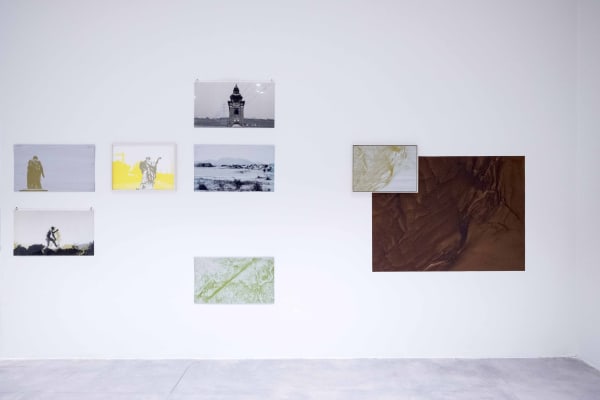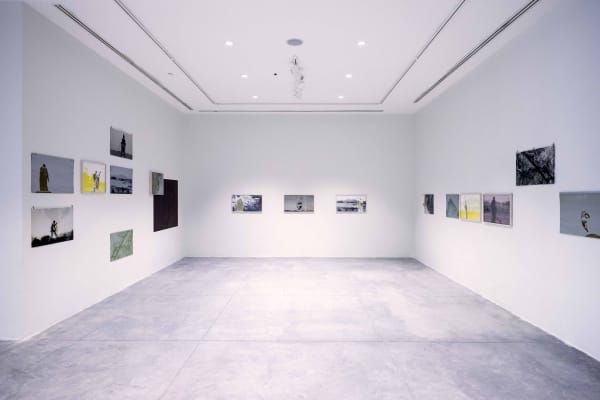Layers of Time and Place: What Lies Beneath
The idea for Layers of Time and Place: What Lies Beneath (2018) emerged from Abraham Oghobase’s first trip to Jos, Plateau State a few years ago. He was fascinated by the vastly different terrain from the urban jungle of Lagos, his own home since birth. The large man-made ponds and lakes, which form a prevalent part of the modern landscape of the city of Jos and its surrounding areas, were visually striking.
When researching its history, the artist discovered the prevalence mining of tin deposits beginning in 1904, when the British colonial government began mineral exploration in Nigeria’s Northern Protectorate. He became interested in exploring these mining ponds and other traces left behind from the height of the industry, which continued into the early 1970s. Despite its rapid decline following that period, tin mining still continues today in the state on an artisanal and informal scale. The resulting body of work, sponsored by Art Twenty One, is a cross-sectional study of moments frozen in time, detailing his experience in and around Jos.
The series reveals multiple layers of the artists’ personal encounter with the unique topography of Plateau State - bare grasslands and ancient rock formations, all indelibly scarred by human pursuits of the past and present. Digitally altered self-portraits re-imagine British colonial history and systems of power. Self-portraits against dusty and desolate backdrops interrogate the city’s legacy of mining and the adverse effect it has had on the people and surrounding environment. An installation of rock specimens in the exhibition space point toward the materiality of the work – digital negatives deconstructed in the lithographic printing process – placed over close-up self-portraits to reinforce the relationship between the natural environment and human experience. The captured, unaltered landscape, littered with the abandoned, ramshackle remains of colonial mining practices, and images revealing artisanal miners and herders all expose a continuum of human activity.
Finally, What If Austria HadColonized Nigeria? is a sub-series first presented in 2017 at the Leopold Museum in Vienna, Austria as part of the exhibitionConundrum of the Imagination: On the Paradigmof Exploration and Discovery– curated by Bonaventure Soh Bejeng Ndikung and PaulineDoutreluingne – that imagines an alternative history by employing the lithographicprinting approach to combine Jos landscapes with images from Austria.Layers of Time and Placeultimately aims to provide an opportunity, using history and theself as a framework, to see beyond the image, stretch the limits of perspective andimagination and delve deeper into the sense and meaning of a place.I think that the landscape contains a primordial part of us. So when we walk through it,we can sometimes, but not always – get an opportunity to receive something that the landscape has. The landscape can give us back something that we’ve forgotten...” PerBak Jensen Abraham Onoriode Oghobasewas born in Lagos, Nigeria in 1979. He studied at theYaba College of Technology’s School of Art, Design and Printing in Lagos, majoring inphotography.
A quest for the purpose of existence has led Oghobase to a unique form ofart as he explores issues relating to human emotions and identity against specific socio-economic backdrops, often using himself as material for his performance-based work. Inrecent years, Oghobase has adapted the four-color separation printing technique to buildhybrid compositions consisting of monochrome layers of images. Oghobase’sphotography has been exhibited widely, including at the Leopold Museum, Vienna (2017),Palais des Beaux Arts (BOZAR), Brussels (2016), Victoria and Albert Museum, London(2014), and KIASMA Museum of Contemporary Art, Helsinki (2011). He was a finalist in2014 for the prestigious Prix Pictet global award in photography and sustainability.Oghobase lives and works in Lagos, where he practices his art and contributes regularlyto artistic forums, workshops, and festivals.























